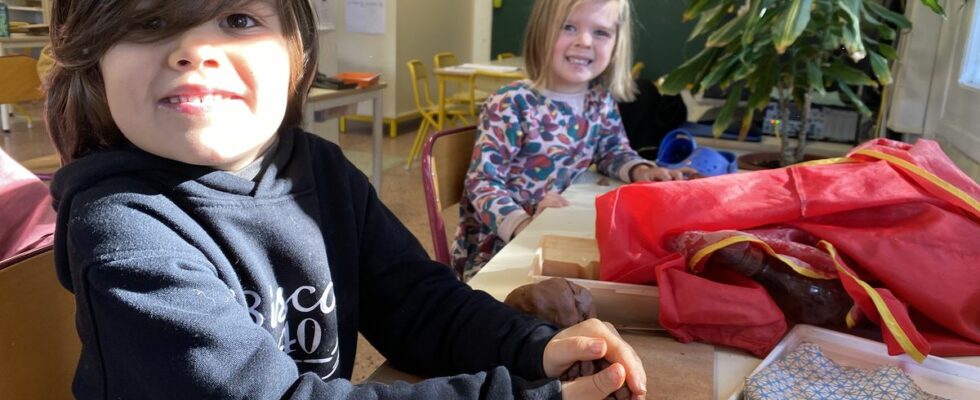A few kilometers from Nice, in Vence, among the trees, on a small mountain, children play in what looks like a playground. “We don’t say recreation but time to explore nature,” corrects Marie, a teacher with the little ones. In this school, there is also no control, subject or program properly defined. “Children do self-assessments, they work on free texts produced by themselves and learn through life experiments integrated into the school,” she says.
This school is public, free and open to all. “As in the other establishments, the Freinet school is inspected by the National Education and must respect the global evaluations. The difference, according to the teacher, is that “children don’t learn to get good grades or please their parents, but because they want to have a culture and an openness to the world”. And to prove it, she also participated in the development of the podcast “La Buissonière”, in immersion with the children, to “see what is really happening in the class”.
“Bounce on life situations”
The schedules are the same as elsewhere, from 8:30 a.m. to 4:30 p.m., in a continuous day interspersed with autonomous workshops because “the principle of pedagogy is to have working times according to the rhythm of the children”, specifies Married. To “criticism of possible delays”, she replies that at least “the children are moving forward and not abandoning the school system”.
“I’m choosing the job I’m going to do today,” exclaims Tao, 4, seated at a table. He must then validate it with the teacher who will “guide him”. On another table, a child is counting the lines of the Paris metro. “It’s a plan that was brought back as a ‘find’, explains the teacher. Once presented to the class, the challenge is to grab the object and use it to learn. »
On the other side of the room, Marnie and Havana are “in print”. They copy a text written by a classmate and print it “the old fashioned way”. Grégoire has just finished his sculpture. “It’s a snake with its food,” he says proudly. At the same time, the “little ones” return. They were in the vegetable garden to plant beans “with real tools”. And when everyone goes on a break, Lou revises “her lecture” on Marie-Antoinette, a kind of presentation that she will present to the class on this theme that she loves and which questions her.
The three pillars of pedagogy
The school is based on three pillars: “The pedagogy of life with attachment to what surrounds them, which allows motivation and curiosity and to hatch the passions of each, begins Marie. The pedagogy of success, where failure will not lead to a loss of confidence and self-esteem. And the pedagogy of democracy with large meetings, a moment of exchanges every fortnight”.

And these teachings also apply in “savoir-être”. At noon, when it’s time to eat, the menu of which is prepared by the children, it is one of the times when “the adults take care of their little ones”, a sponsorship system established at the start of the school year. They accompany them, help them cut the food and then “lay them down” for a nap. Before returning to class, everyone has “responsibilities”, cleaning up, putting the waste in the compost or taking care of the chicken coop.
A popular pedagogy in Vence
This school has been operating in this way since 1934, when Célestin Freinet, teacher, imagined a new way of learning by putting the student at the center to “interest him more” and allow him to “question himself and develop his critical sense”. It went public in 1991 with conditions. “An agreement was signed to ensure that this pedagogy would always be preserved”, underlines Aurélia, teacher and director of the school since 2013. This includes a workforce of 66 places. “This year, we had more than 40 requests but only eleven places, says Marie. We prioritize siblings while trying to create a social and cultural mix. »
This popularity is explained, according to the director, because “the children arrive in the morning with a smile and with a sense of their presence here”. An opinion shared by those concerned. During “a big meeting”, they asked to create “an additional year” after CM2. “They will then carry out a survey over a year to get feedback from the elders and see if this 6th grade proposal is possible”, specifies the teacher. She concludes: “What changes with the normal system is that they are actors. They build themselves to be the citizens of tomorrow by being fulfilled. »

